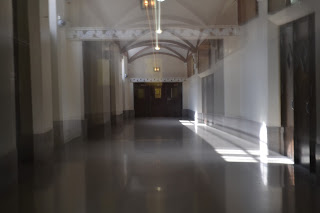F stop #5.6
F stop #14
F stop #22
Aperture affects the depth of field by allowing more light into the lens, thus narrowing the depth of field. In my first photograph, I had a large aperture. The lens took in a lot of light, so the photo looked washed out. The depth of field was also narrowed and the majority of it was a bit unfocused. In my last photo, the aperture was small and the photo was darker. The depth of field was deeper and the photo was very clear. Shutter speed affects the overall quality of the photo by determining how much light is allowed into the lens. This is dependent upon how long the lens is open versus aperture, which is dependent upon how wide the lens is open. Both aperture and shutter speed contribute to the quality of a photo by deciding how much light will be allowed into it. They have to be adjusted in order to compensate for one another in order to achieve the optimal quality of a photo.










